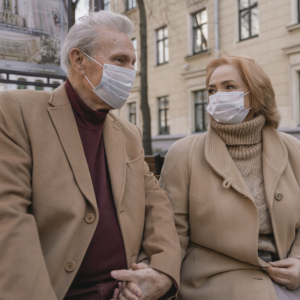Rollout Review: Problems With COVID Vaccines And Their Impact On The Pandemic

Rollout Review: Problems With COVID Vaccines And Their Impact On The Pandemic
January 13, 2021
By now you’d have to be living under a rock not to be aware of the less-than-successful rollout of the several available new COVID vaccines. While there were predictions that up to 20 million people would be vaccinated by the end of 2020, that expectation turned out to be wildly inflated, as only 3 million Americans had received the vaccine by December 31st of 2020. Why is that? With the challenge of the most ambitious vaccination effort ever mounted, a number of factors have slowed things down: There were the staffing and administrative problems arising from starting the program during the holiday season, along with the lack of such sufficient resources as PPE and personnel to administer the vaccines. With a surging viral transmission around the country, coupled with logistical challenges caused by decentralized planning, along with insufficient funds to support vaccination of large numbers (as well as time demands of thawing and preparing vaccines and monitoring those who have just received the vaccine)- all of these issues have resulted in a slower-than-expected rollout and inoculation implementation. And while the Trump administration has now pledged to speed things up by eliminating stringent hierarchies as to who can get the vaccines, along with increasing the number of venues offering the vaccines, there’s still no guarantee that things will improve or the infrastructure will be in place to ramp up vaccine administration. As you’ve likely heard, the incoming Biden administration pledges to get vaccination levels up to one million doses per day within the first 100 days of the new administration.
Yet these new ambitious plans still don’t guarantee things will get better any time soon. Ramping up dosage availability, and not holding doses in reserve for follow-up second shots, may lead to more people receiving their initial dose, but there is the potential for harm if supplies are stretched so that there’s a time delay for the second dose. As Dr. Sanjay Mishra of Vanderbilt University has stated, “Rushed and ineffective vaccines can produce antibodies that fail to recognize and bind viruses poorly which can do more harm than good.” Single doses without the timely second dose may trigger a less effective immune response and we have no data to support how protective just one dose would be. Moreover, increasing the number of venues that will provide vaccination raises another safety concern: Will those venues be able to handle possible (though rare) life-threatening side effects? While to date there have been few serious side effects and they have been largely dealt with successfully, there is a CDC protocol for how to handle problems such as anaphylaxis, and if you have a history of allergic reactions, you are advised to contact the venue where you plan to receive your vaccine, to make sure they have on hand personnel and equipment to deal with emergencies.
Furthermore, in addition to these logistical challenges, there remains a sizable contingent of Americans who are hesitant to be vaccinated or have even outright refused to receive the vaccine, for a variety of reasons. For example, a significant number of health care workers and nursing home caregivers in places such as North Carolina, Ohio, and Los Angeles have all refused the vaccine at this point. Whether due to concern that there’s not enough data to assure safety or due to misinformation spread on social media, many individuals, including minority and rural populations, are reluctant to be vaccinated. There is evidence that myths spread through social media can be effectively countered by linking to factual information and fact-checking, and there is the acknowledgment among experts that better communication, along with such behavioral economic strategies as increased evidence of acceptance (ie, widespread use of stickers or bracelets demonstrating high vaccine acceptance) will go a long way toward convincing skeptics to get on board and get vaccinated. There have even been suggestions that perhaps people can be enticed with money to overcome vaccine hesitancy and that if such an incentive could get us to herd immunity it would be well worth the cost. However, a recent op-ed in JAMA suggests there are many ethical and coercive aspects to payment for vaccination which make such an idea suspect at best.
Finally, if you’ve been lucky enough to get your 2 doses and now consider yourself immune? Congratulations! But what does that mean? Are you now absolved of the need to take precautions and protections? Probably not, as it’s still possible you can transmit the virus to others even if you yourself won’t get sick. And what about visits to the grandkids at long last? Does the vaccine make that now possible? While your risks will certainly be lower once you’ve been vaccinated, we’re a long way from lessening the risks overall through the population. In fact, if you travel to an area of high viral transmission, you’re still at risk, given the vaccine is not 100% effective. The expert advice? Continue the masks and social distancing, and stay outside if at all possible, even if you’ve been vaccinated, as not everyone else has gotten the vaccine, especially children. And if you go for that all-important hug? Make sure you are outside, both of you are wearing your masks, and you turn your heads away from each other as you move to embrace.







